When we recently tested the new GeForce GTX 1660 we noted that Nvidia was making a bold claim in the review guide saying that the 1660 was a whopping 113% faster than the GTX 960, making it a perfect upgrade option for owners of the old mid-range Maxwell GPU.
Considering the GeForce GTX 960 is the fifth most popular GPU among Steam users – and that's a very representative sample of PC gamers – seems there are plenty of you using it, so we thought we'd investigate what truth there is to Nvidia's words.
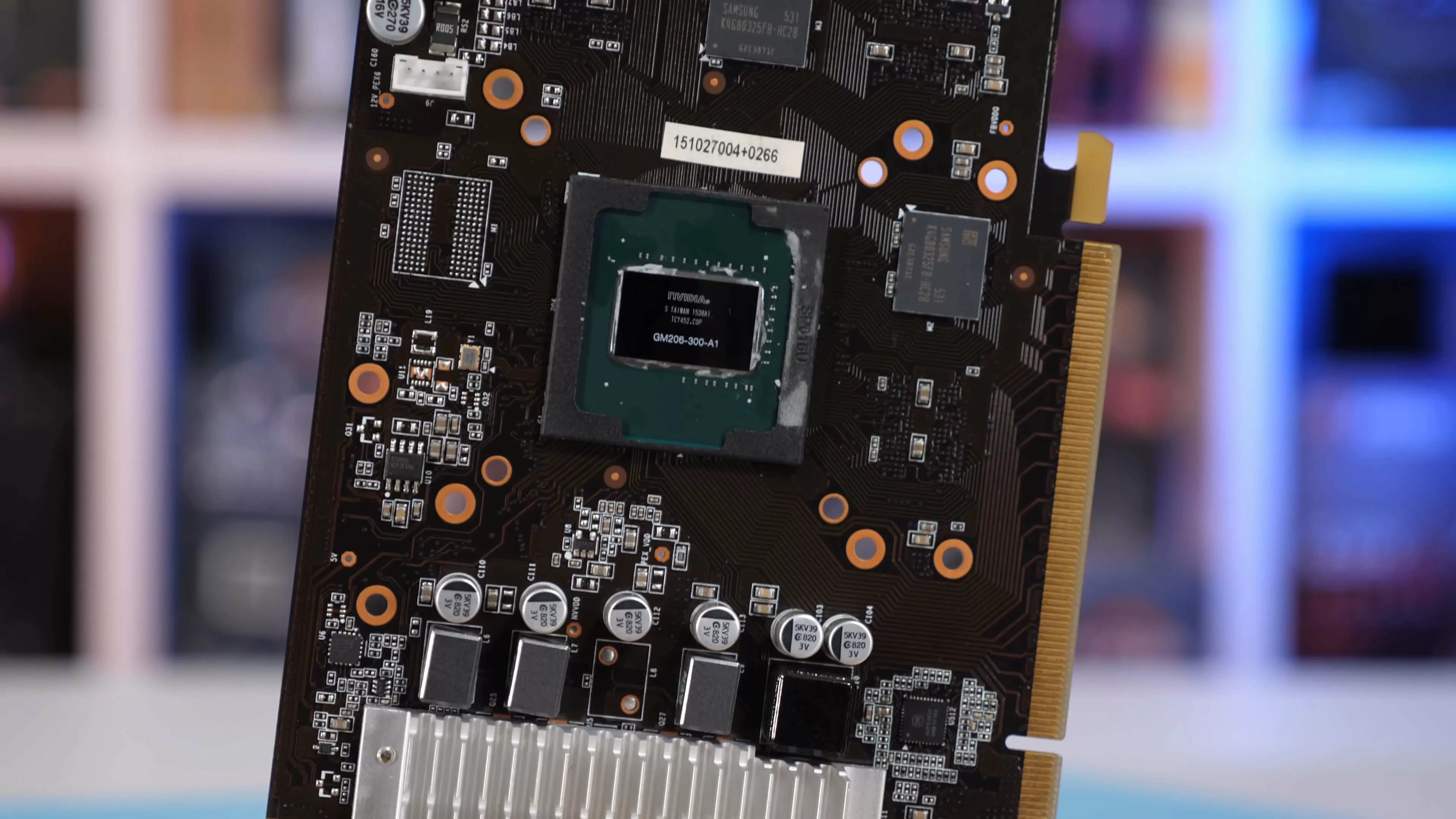
Before we get to the benchmarks, a few quick stats. We first reviewed the GTX 960 back in January 2015 aiming at the $200-$250 bracket. It came packing 1024 CUDA cores, 27% less than the 1660 and they're clocked 34% lower. There's also 33 fewer ROPs and while both make use of GDDR5 memory the GTX 960 has 42% less memory bandwidth due to lower clocked memory and more crucially a narrower 128-bit wide memory bus.

For this test the focus will be on 1080p performance, looking at a dozen titles closely before jumping to a 33 game breakdown comparing the GTX 1660 and 960 head to head. All tests were performed in our GPU test bed which includes a Core i9-9900K clocked at 5 GHz with 32GB of DDR4-3200 memory. We relied on Adrenalin 2019 Edition 19.2.3 drivers for the Radeon GPUs and Game Ready 419.35 WHQL for the GeForce GPUs.
Gaming Benchmarks
Playing Apex Legends at 1080p with the high quality preset isn't much fun with a GTX 960. You're looking at frame rates that are consistently well below 60 fps, far from ideal when playing a fast paced first person shooter. Those not wanting to reduce visual quality will have to upgrade and the new GTX 1660 offers a healthy 136% performance boost with 106 fps on average.
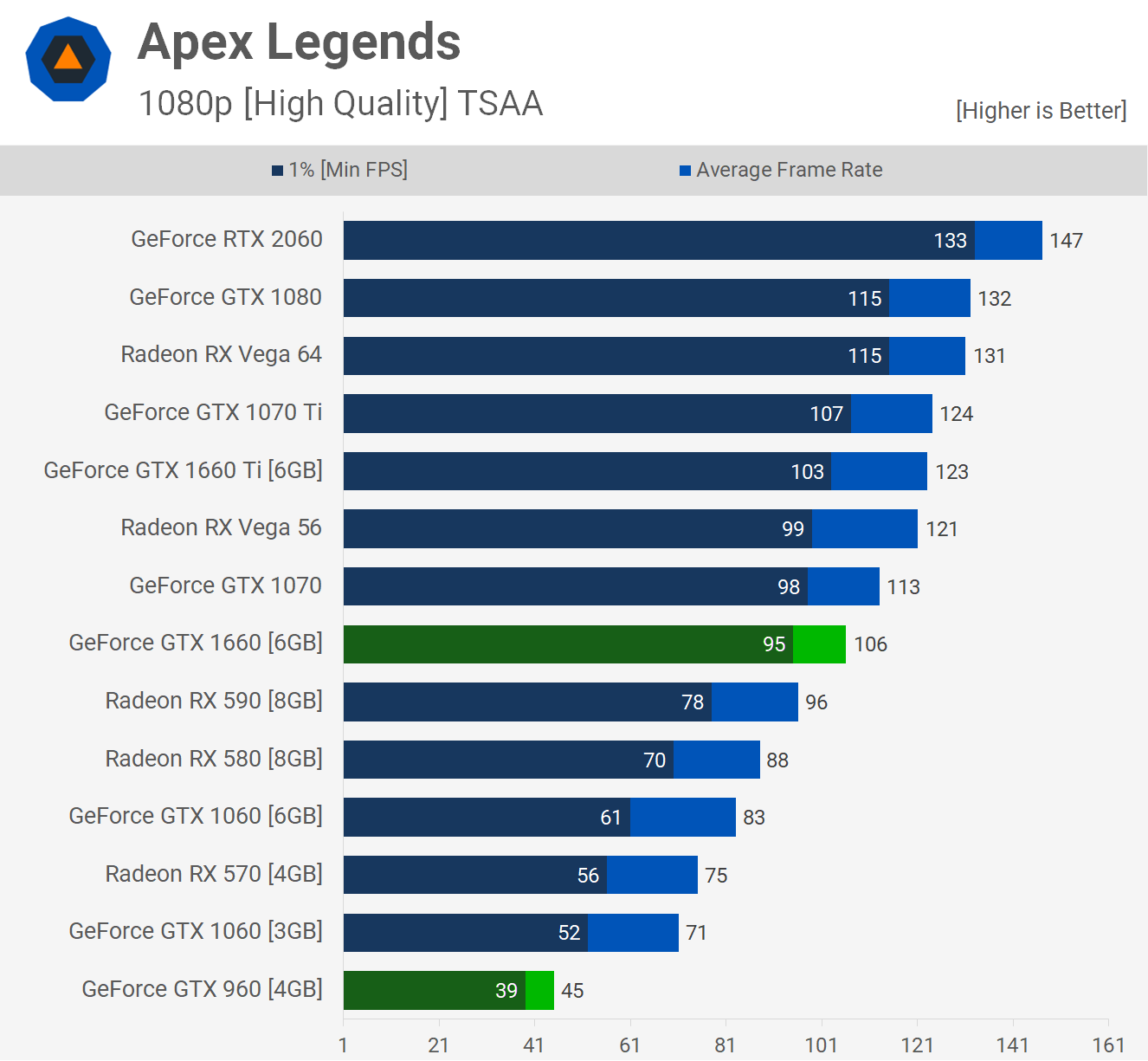
Moving on to the recently released 'The Division 2' and we find a dire situation with the GTX 960.
Just 27 fps on average, the games is nearly unplayable using the ultra quality preset at 1080p. Admittedly the game is quite demanding with these quality settings, but those looking to upgrade to a GTX 1660 can look forward to a 152% performance boost, not that bad. Though if you're only looking at playing The Division 2 then the RX 590 might be a better choice.
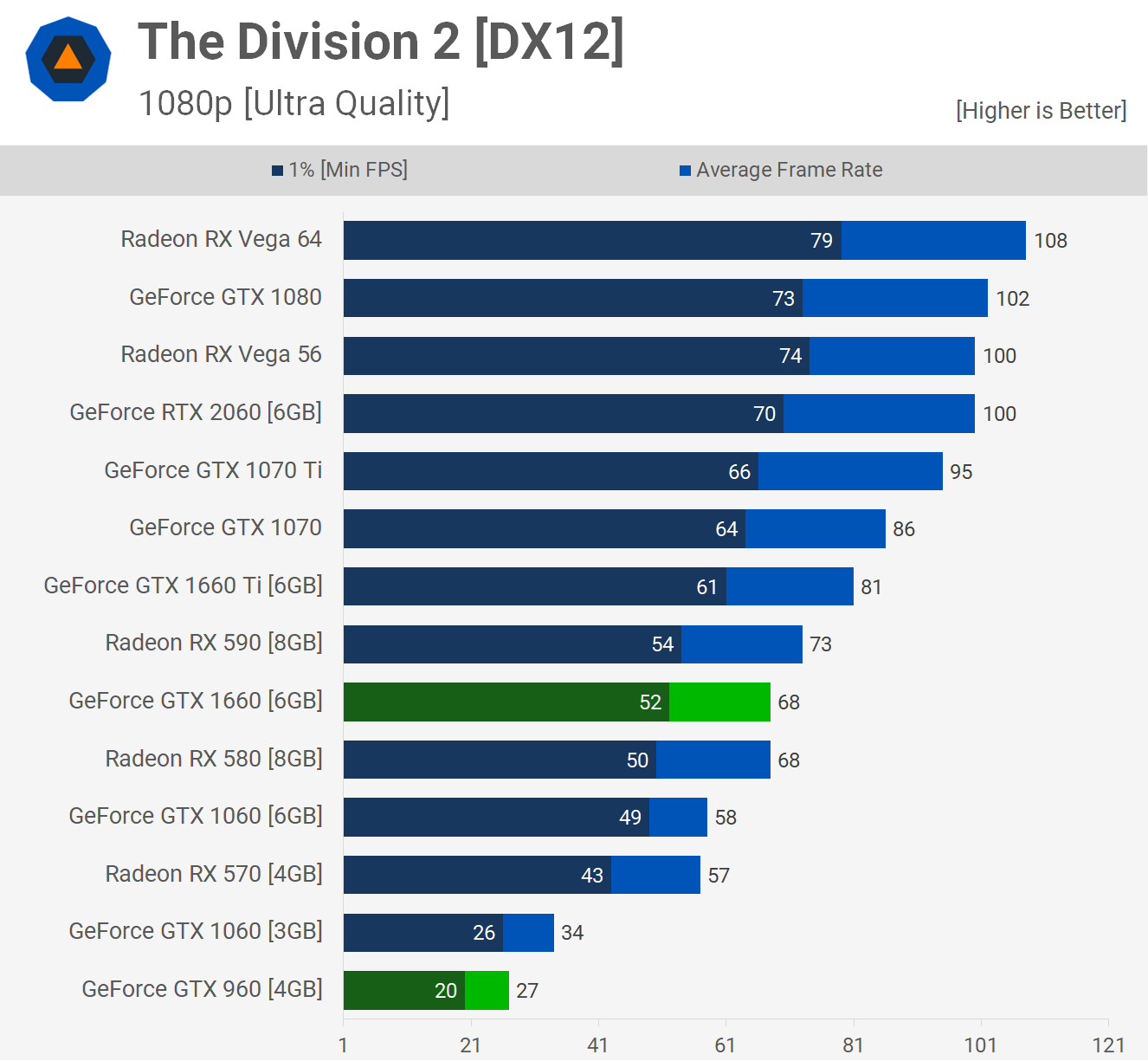
We find a similar situation when testing with Shadow of the Tomb Raider, using the highest quality preset the old GeForce GPU spat out just 34 fps on average and with frame dips into the 20's. Meanwhile the 124% performance bump offered by the GTX 1660 meant that the game could now be enjoyed in all of its glory at 1080p.

The GTX 960 does do a decent job in Forza Horizon 4, as long as you have the 4GB model. Even so the GTX 1660 still offered a 126% performance boost hitting 95 fps on average and with over twice as many frames pumped out each second it did offer significantly smoother gaming experience.
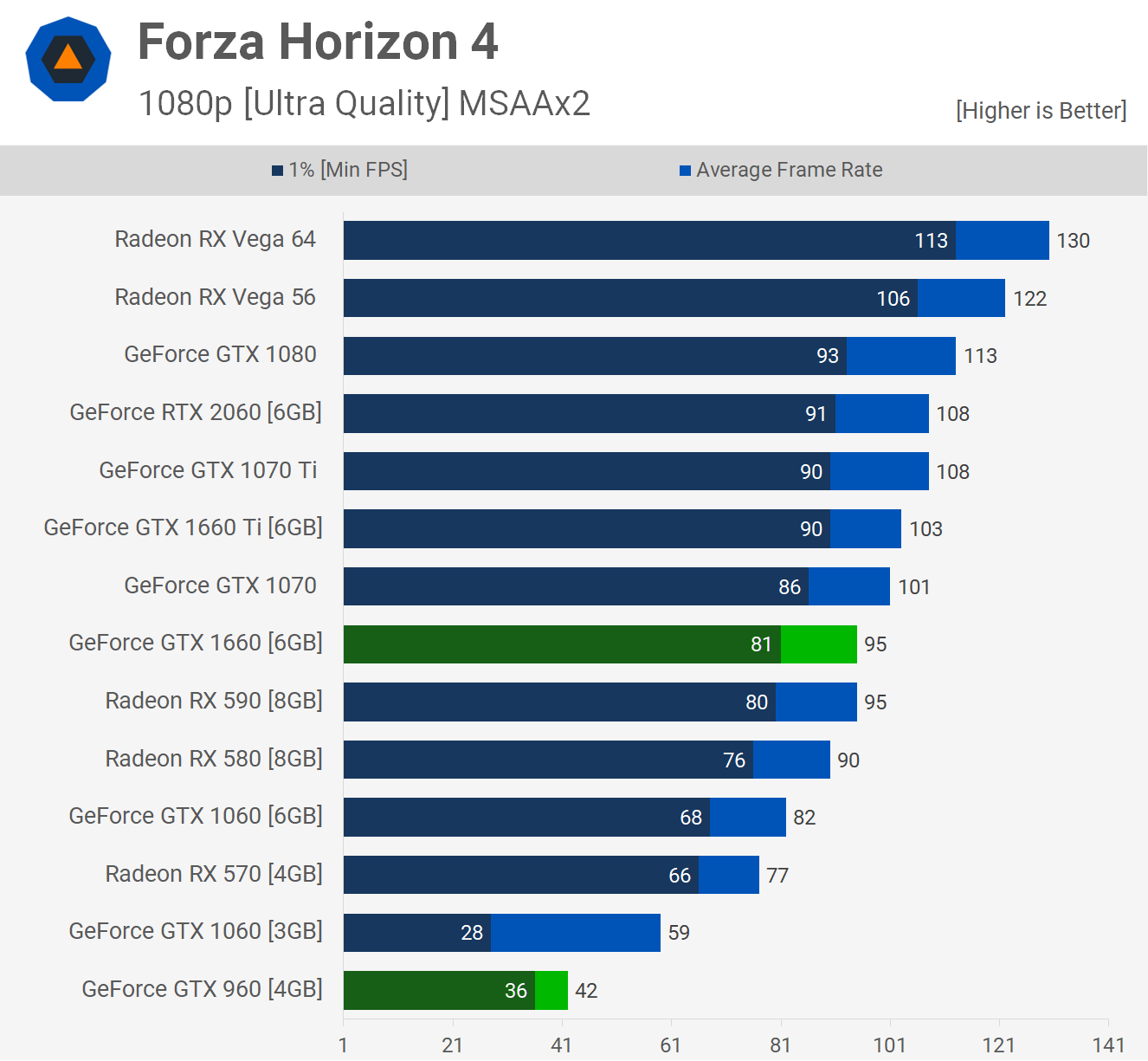
Hitman 2 was also playable with the GeForce GTX 960 and it wouldn't take much to dial back the quality settings to achieve 60 fps. That said, if you want to enjoy Hitman with the ultra quality settings enabled then something like the GTX 1660 is the way to go as it spat out a much more impressive 93 fps on average.

Testing with Just Cause 4 saw the new budget Turing GPU deliver just over twice as many frames when compared to the GTX 960.
The jump up from 32 fps on average to 65 fps is massive and it makes leaping and flying around while you attack enemies much easier and perhaps more importantly, much more enjoyable.
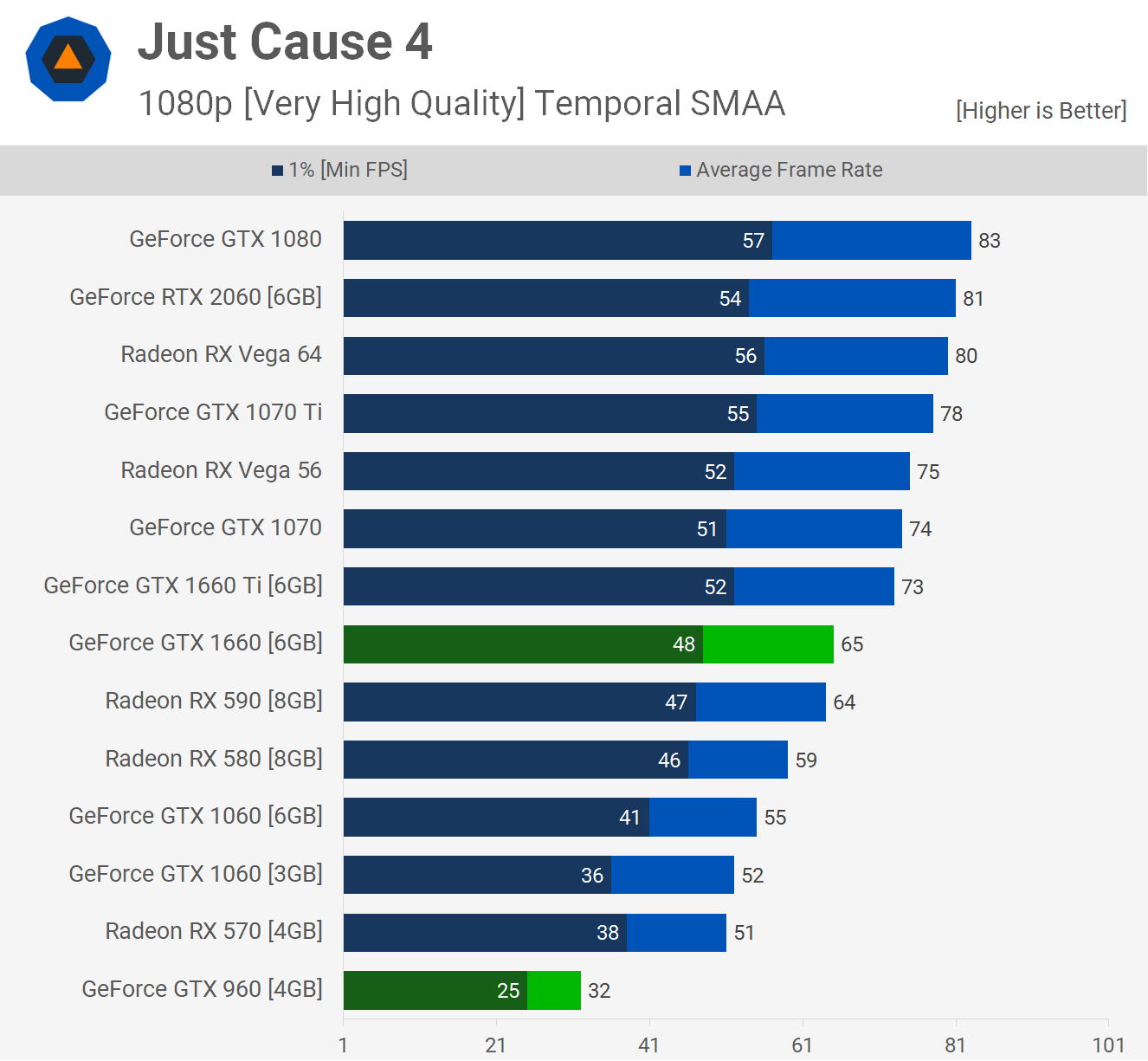
We see a pretty consistent trend here, testing with Resident Evil 2 saw the GTX 1660 providing 129% more performance at 1080p with the maximum quality preset enabled. More than doubling the frame rate obviously leads to significant improvements in gameplay and while this isn't a game that necessarily needs big frame rates, the smoother motion certain adds to the experience.
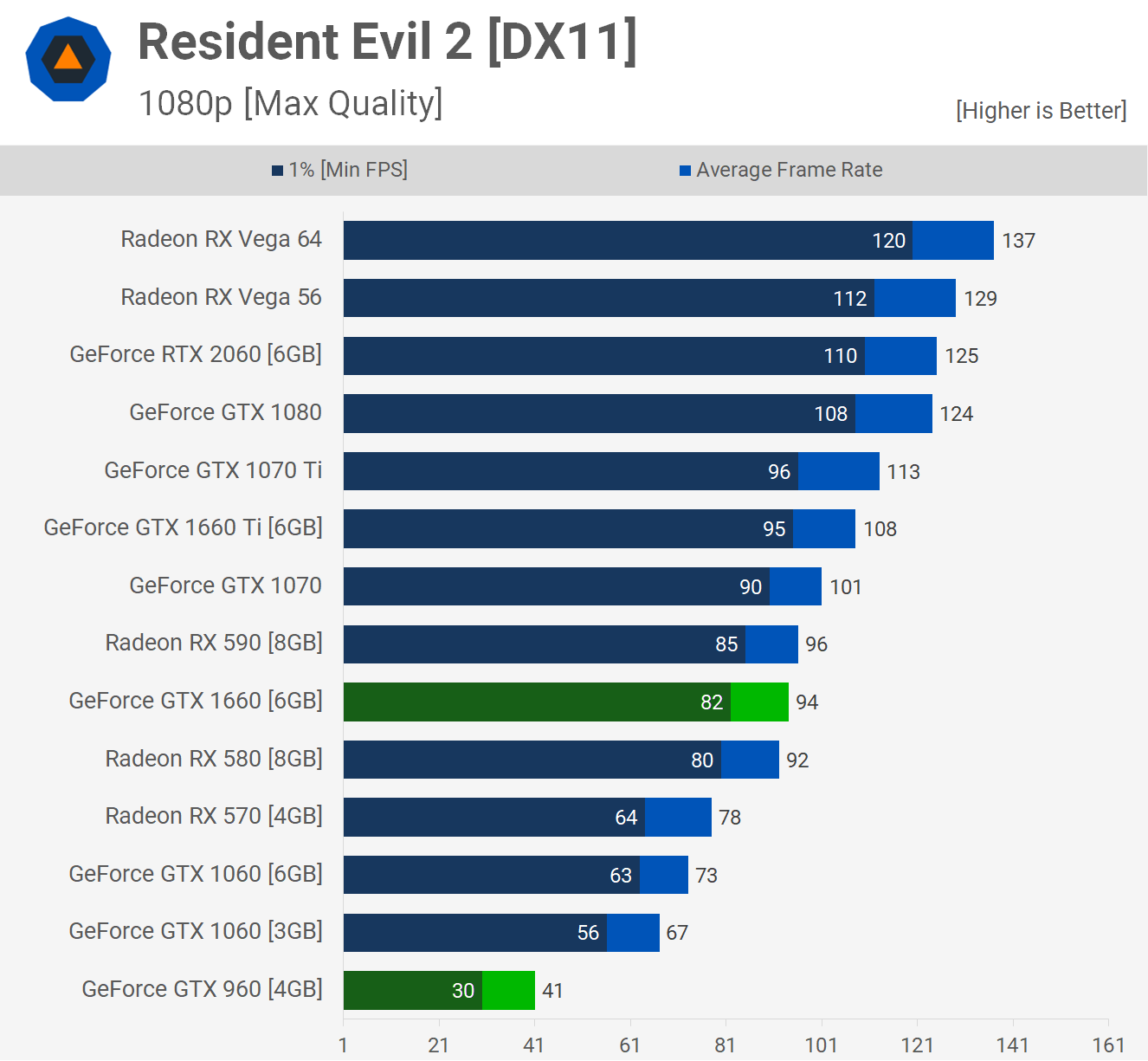
Of all the games we've benchmarked so far, Fortnite is by far the least demanding. As such the GTX 960 was good for 52 fps on average and we are using the Epic quality preset, so with competitive settings the GTX 960 would be pushing over 60 fps at 1080p. However if you want 144 fps+ with competitive settings the GTX 1660 will be required and even with the Epic preset enabled it still averaged 113 fps.
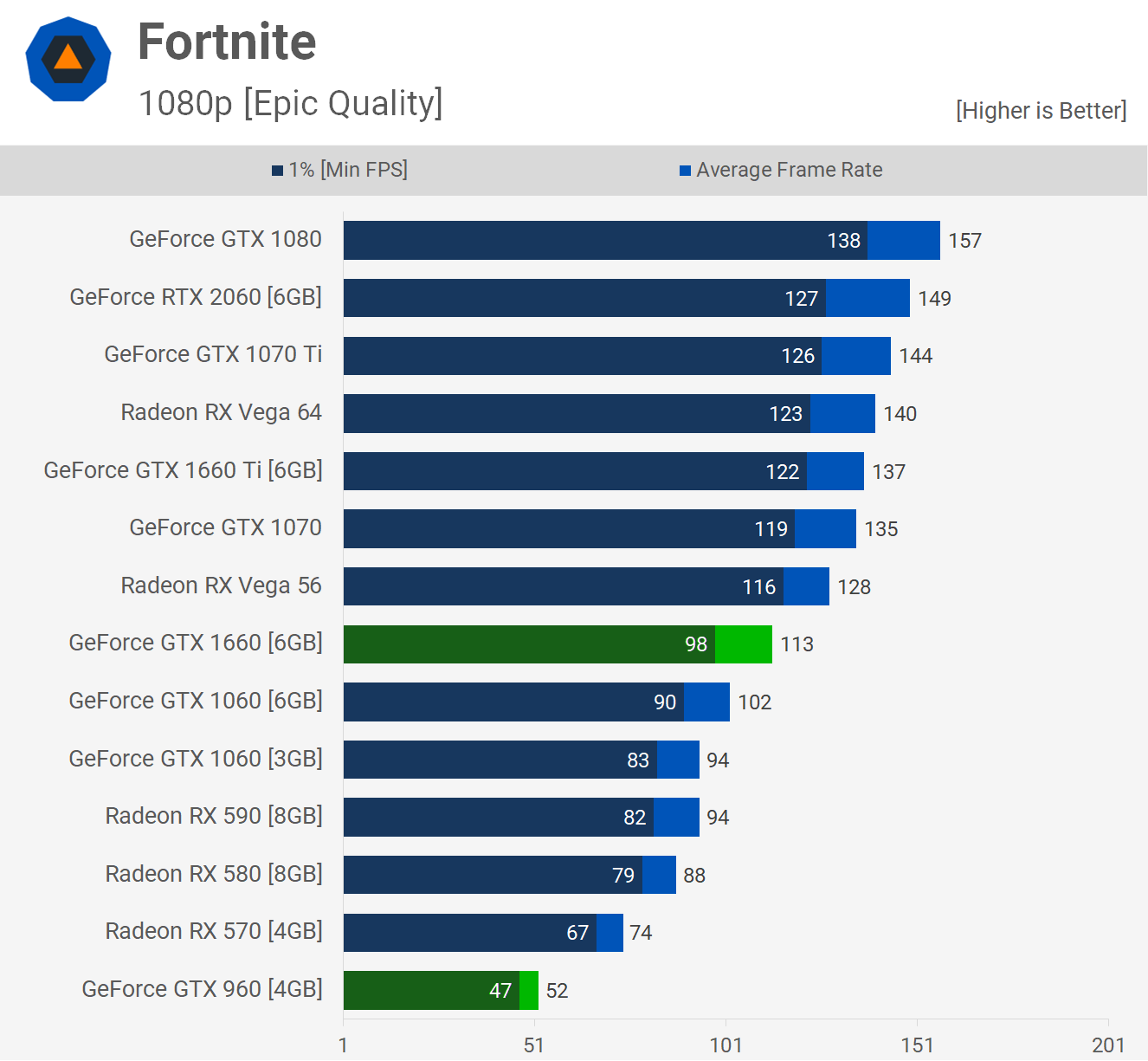
Metro Exodus is a new and very demanding title. The GTX 1660 can't reach a 60 fps average at 1080p with the ultra preset enabled. That said it's a darn sight better than the 27 fps on average you'd be getting with the aging GTX 960, so there's that.

We must admit we were expecting the GTX 960 to do quite well in Rainbow Six Siege. While 48 fps on average is playable we did expected more, though come to think of it we're not exactly sure why given the RX 570 only renders 69 fps on average. This means the upgrade to the GTX 1660 would net you a healthy 146% performance boost, hitting 118 fps on average.

Battlefield V is an interesting result as it's one of the smallest deltas we found for the 1660 over the 960, across the 33 games tested. Here the Turing GPU was 81% faster. Still a big margin but given we've typically seen more than double the performance out of the 1660, this is a bit of a surprise.
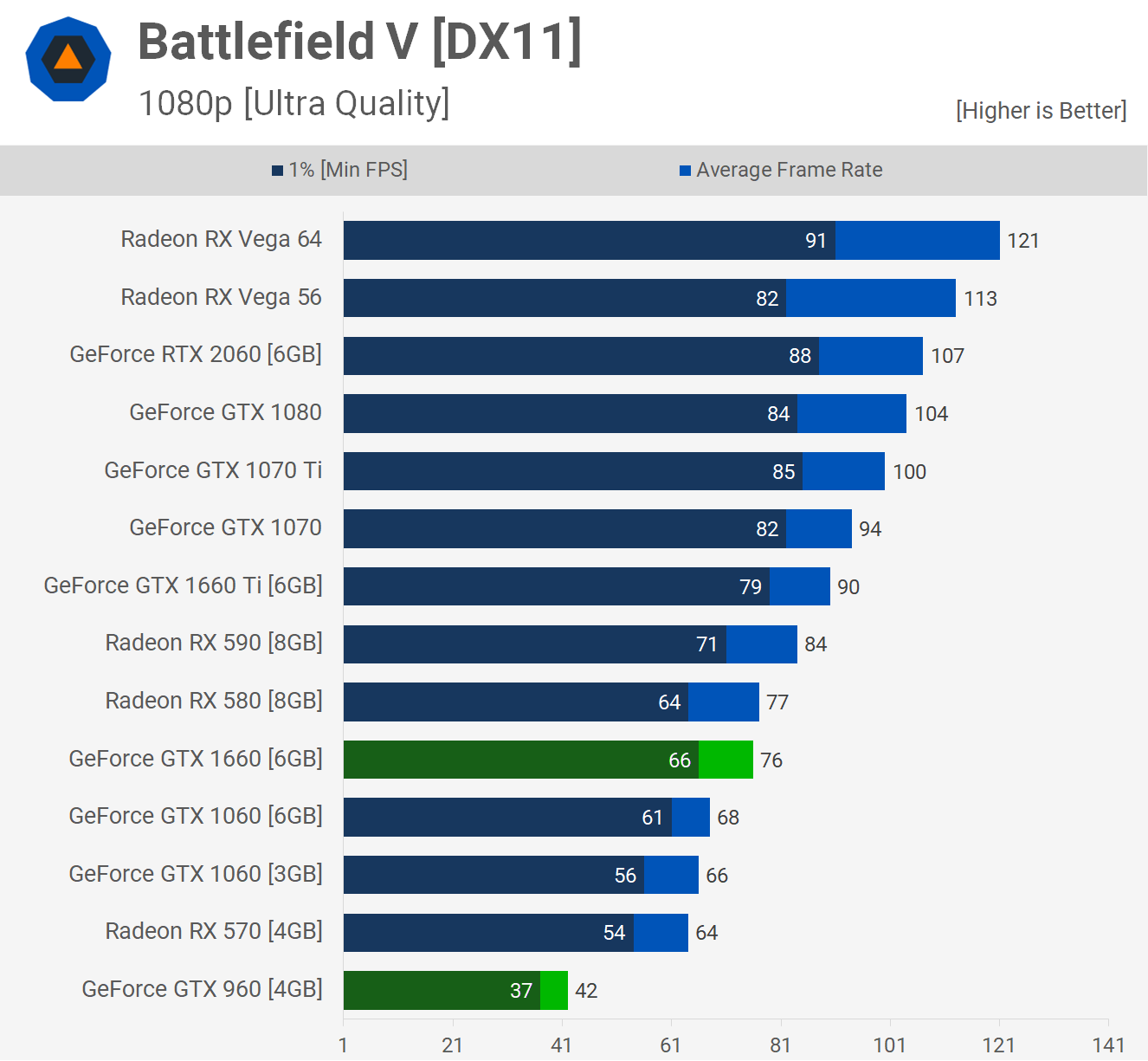
Although World of Tanks has recently received a major overhaul and we are testing with the HD client, it's still very well optimized for older hardware. For example, the GTX 960 was good for 55 fps on average and that's very playable performance in this title. Still if you seek more performance then the GTX 1660 can help you out with a nice 91% performance bump.
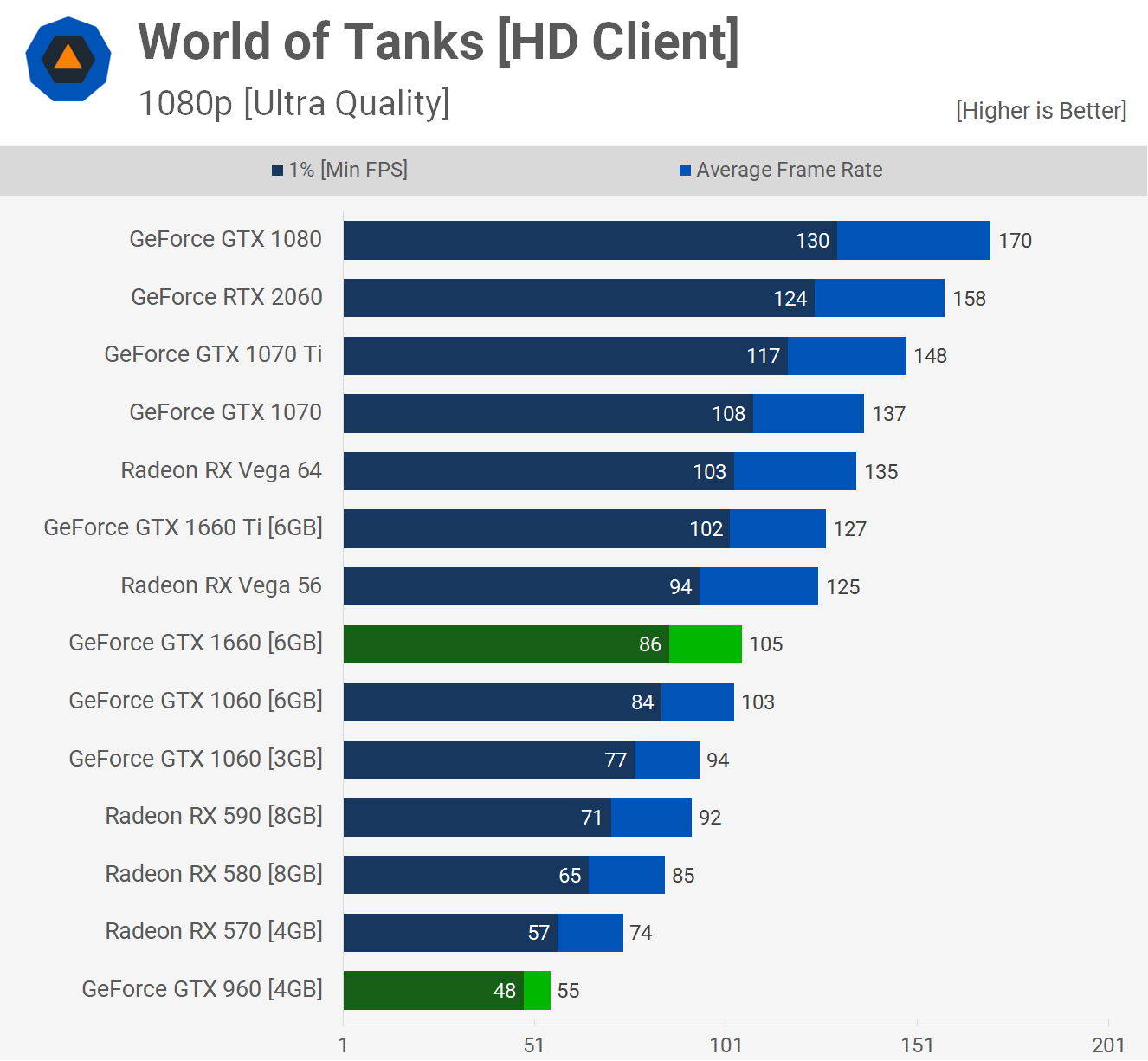
The GTX 960 also has just enough grunt to play Far Cry New Dawn at 1080p using the ultra quality preset. Pretty impressive and it really speaks to how well optimized this title is.
Still, if you want to keep frame rates well above 60 fps at all times than the 98% performance boost you'll get for the GTX 1660 will be very welcomed.

Power
When it comes to power consumption we see just how impressive the Turing-based GTX 1660 is in terms of efficiency. Despite often offering twice as much performance as the GTX 960, it pushed total system usage just 16% higher, hitting 262 watts. Even by today's standards the GTX 960 isn't terrible and you'll get away with a very modest power supply.

Putting It All Together
Four years later, we've seen how the GTX 960 performs in modern titles at 1080p using dialed up quality settings. It's not great, but it's also about what you'd expect from a mid-range graphics card that no doubt is still serviceable unless you require top graphics fidelity.
The GTX 960 went on sale for $200 for the 2GB models, and typically around $40-50 more for the 4GB version that we tested today. If you are running a 2GB model then the performance uplift is going to be even greater that we saw today.
Based on the 13 games that we just looked at, the GTX 1660 is about twice as fast as the GTX 960. At 1080p we're looking at a 117% performance boost on average. That's massive and it means Nvidia were right on the money.
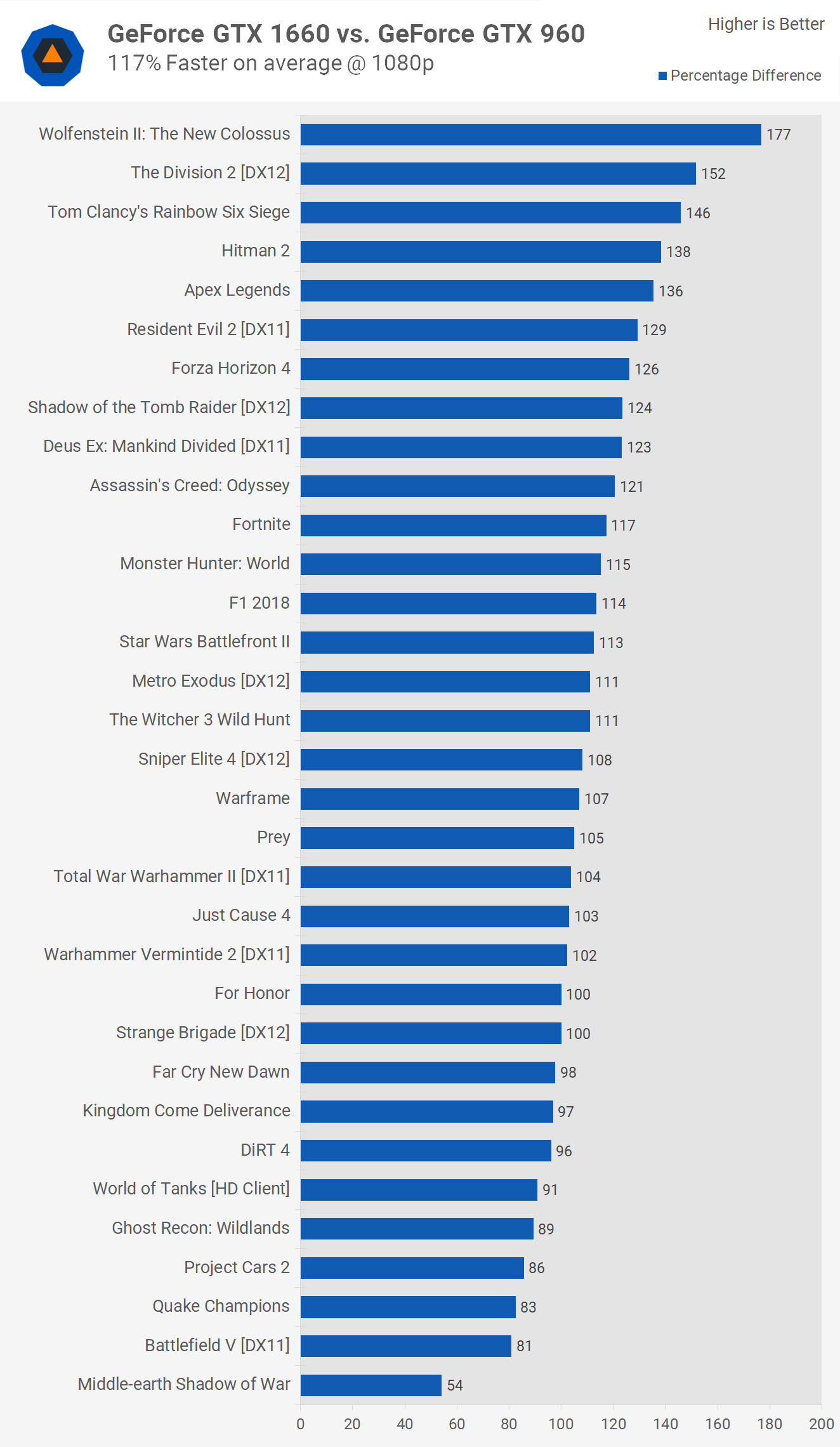
Granted, the GeForce GTX 1660 today will cost you ~$280 but that's not unreasonable to ask in today's market and has in fact made other GPUs below or above it adjust accordingly. The more affordable Radeon RX 580 8GB costs $190 at the moment, placing it roughly on par with the GTX 1660 in terms of cost per frame if you're going for ultimate value for your buck.
This does mean GTX 960 owners have had a somewhat similar value option in the RX 580 for some time, making the GTX 1660 a little less exciting. Nonetheless, there is now a number of solid upgrade options for those still using a GTX 960 or something of similar performance. You can check out our recent 33 game test of mainstream GPUs here, or if you're using a GTX 980 instead, we revisited that one a few weeks back, too.
